RIMS-CRMP Stories
Stacie Laurencelle: Refining Risk Communication

With more than 25 years in risk and insurance, including several as a course instructor at PACE, the University of Winnipeg, in Manitoba, Canada, Stacie Laurencelle had a unique perspective when earning the RIMS-CRMP in March 2025. She discussed what motivated her to pursue the certification, how the certification domains reflected her daily responsibilities and what it was like to be the student, instead of the instructor.
RIMS: What inspired you to pursue the RIMS-CRMP?
Laurencelle: Pursuing the RIMS-CRMP was a personal goal I set for myself in 2025. While I'm not competitive by nature, I am highly goal-oriented and always looking for the next challenge in both my life and career. The certification was on my aspiration list because I wanted a structured assessment of my theoretical understanding and practical application of risk management principles.
RIMS: How do the domains of the RIMS-CRMP reflect the regular responsibilities of a risk officer or insurance professional?
Laurencelle: Honestly, the domains feel spot-on with what we do day-to-day. It's like they took the key parts of our job and laid them out in a clear, step-by-step way. You start by figuring out how the organization works, then move into designing risk strategies, putting those plans into action, and building up risk skills across the team. Finally, it's about using all that information to help make smarter decisions.
The linear flow really mirrors how we approach risk management in real life—you can't jump ahead without understanding what came before. It's a practical roadmap that aligns closely with the real-world responsibilities we juggle every day.
RIMS: How does your career experience at Richardson and as a course instructor at PACE (and other prior roles) lend to your knowledge base for taking the exam?
Laurencelle: My career has given me broad exposure to complex risk environments across both public and private organizations, and across a range of industries—including agricultural equipment manufacturing, food and beverage, and agriculture and food processing. These diverse experiences have sharpened my ability to analyze organizational models, assess value chain vulnerabilities, and adapt strategies to both emerging risks and long-term stresses. They've also grounded my understanding of risk appetite, tolerance, and strategic frameworks like COSO in a variety of operational contexts.
What genuinely surprised me during the process was how the RIMS-CRMP helped me see new ways to apply both the tools available to me and the knowledge I've built over time. The credential helped refine how I communicate risk—particularly when advising on appetite, tolerance, and organizational resilience—and strengthened my ability to frame risk in ways that are more actionable and strategically aligned. I now approach conversations with greater clarity and intention, especially when supporting decision-making at a broader level.
In a global, vertically integrated business like Richardson, the ability to connect risk to value chains, resilience, and long-term adaptability is essential. The RIMS-CRMP helped sharpen that connection and made my contribution in those discussions even more impactful.
RIMS: You are an educator, but the roles were reversed in this scenario. How effective was the presentation of the exam prep course (virtual or in-person)?
Laurencelle: As someone who teaches risk management, it was refreshing to reverse roles. The prep materials were direct, well-structured, and aligned with how I learn—methodical and sequential.
RIMS: How has the RIMS-CRMP elevated your professional profile? How do you feel the RIMS-CRMP complements other credentials, like the CRM and the CIP?
Laurencelle: The RIMS-CRMP is a powerful complement to credentials like the CRM and CIP—but what sets it apart is its emphasis on competency and real-world application. It's not about theory alone; it's about how effectively you apply risk principles in practice.
For me, it reinforced the strength of the approach I’ve developed over the course of my career, while also offering the opportunity to refine and expand it. The certification is a reminder that even experienced professionals benefit from stepping back, reassessing, and continuing to grow.
RIMS: Why should more rising risk professionals pursue the RIMS-CRMP?
Laurencelle: Because it bridges the gap between technical knowledge and applied competency. It’s not simply about understanding risk theory—it's about demonstrating the ability to integrate risk thinking into strategic decisions, facilitate meaningful conversations, and add value across the organization.
The certification rewards experience and insight, which makes it especially powerful once you've been practicing risk management for a while. It validates what you’ve learned through practice and pushes you to think more critically and holistically—it's a meaningful step forward.
See the full RIMS-CRMP Exam Prep calendar.
Interview by Justin Smulison, RIMS Business Content Manager
